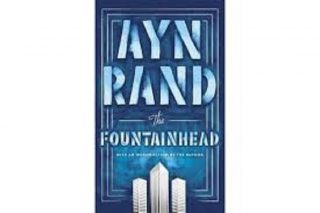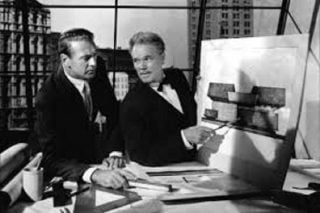The Fountainhead, published in 1943, is a novel written by the Russian-American author Ayn Rand. While the novel doesn’t explicitly mention her philosophical system called Objectivism, one can see traces of it in the book. Objectivism is basically a philosophical system developed by Rand which focuses on individualism and according to Rand is embodied in laissez-faire capitalism. While the philosophy presented by Rand is a bit too extreme, we can take certain lessons from her novel that can help us achieve success in India’s increasingly competitive environment.

Why would lessons from The Fountainhead work in India?
Now one may wonder why and how the lessons hidden in the book which was written and set in 1940s America apply to us today in India. The answer is simple, today India has become an increasingly competitive arena and in order to succeed, while one does need talent, something embodied by Howard Roark, but at the same time one needs to know how to maintain relations with people and work as a part of society not against it, something embodied by Peter Keating. When I say that become a part of society, I do not mean follow others like a flock of sheep. What I mean is that no one exists in isolation and in order to grow and progress as an individual, it is necessary to acknowledge that people other than you exist and to maintain cordial relations with the society.
This is where we need to remember that the world created by Rand in her novel catered to her philosophy of individualism and objectivism thus while it is essential to read and to take a note about her characters, we also need to realise that we need to take up certain traits from each character that makes them who they are instead of following just one blindly. The reason behind this is that Rand created her characters as two ends of a spectrum with one representing her idea of an ideal man and the other the exact opposite of him. Hence, what we need is to create a combination of the two characters to succeed in India and the real world

Roark and Keating as extreme characters
In her novel, Rand creates two extreme characters, Peter Keating and Howard Roark, who are complete opposites of each other. Howard Roark represents Rand’s idea of an ideal man who is completely individualistic and does not get along with society. It is then of no surprise that the novel ends, spoiler alert, with his success. Peter Keating, on the other hand, is a character who is the exact opposite of Roark and directs his behavior to please society. Now what we need to remember is that these characters were extremes created by Rand in her novel to suit and to propagate her philosophy of objectivism, and neither would exist in the real world. What does exist, and succeed, in the real world, however, is an amalgamation of the two characters.
It is this amalgamation that is perfectly suited for the work environment in India where one needs talent but cannot ignore the society which includes co-workers, those at a higher position than you and even those at a lower position. India is a closely knit society where your values matter a lot and thus it is essential to be respectful to one and all, however different they may be from you. This is a trait shown by Keating and would work wonders in India.
Howard Roark
Howard Roark, Rand’s model of an ‘ideal man’, is an individualistic man who follows his own rules and doesn’t care about society. While his dedication to his ideals is commendable and inspiring, such a man cannot succeed in today’s exceedingly and increasingly competitive society. The reason behind that is simple: no one exists in isolation and to succeed it is essential to acknowledge that people other than you exist who may have different priorities and ideologies and you cannot simply ignore them, particularly in a nation like India.
Thus while you do need to become like him in the sense that you determine your career on the basis of your desires and talents and work with dedication, in a nation like India, an individualistic attitude such as that of Roark would work against creating a friendly work environment.

Read: Why being a rebel is not as cool as you think?
Peter Keating
Peter Keating, on the other hand, is a more real, relatable and human character. He is a man who works hard, sometimes becoming too competitive, to achieve what he wants, even if it is at the expense of others. The main problem with Keating’s character is that firstly, he is willing to succeed at the cost of others, and secondly, that his idea of success is approval by the society.
However, if you take these traits away and whitewash his character, he can teach you how to socialize effectively, which is important to succeed in a society like that of India where you have multiple competitors who are as talented as you are.
A real world perspective
Thus, in the real world, which is becoming extremely competitive, neither of the characters presented by Rand would stand. What we need, therefore, is an amalgamation of the two. We need certain characteristics from both these men and apply them to ourselves in order to succeed and to grow as an individual.
Combining Roark and Keating
What we need is to take the dedication towards one’s principles and ideals from Roark. Our decisions should be independent of what society thinks. At the same time, we also need to realise that we do not exist in isolation and should be willing to work with others, however different from us they may be, something embodied by Keating.

The secret to success
We need to accept that everyone is different and driven by different forces, but this does not make one inferior to the other. We need to realise that a world full of either Roarks or Keatings is bound to fail. What we need is a combination of the qualities of both which would make one truly successful and a better human being. This combination would make us dedicated, hard-working, and a person who gels well with others, a quality which essential for survival in India, or any other country for that matter.
I know that all of this is easier said than done, but hey, we can all at least try, right? And if you haven’t read The Fountainhead yet, now you have a reason to.
Image sources: Google Images
Liked what you read? Read more:
http://edtimes.in/2017/06/5-libraries-india-must-visit-bookworms/

































